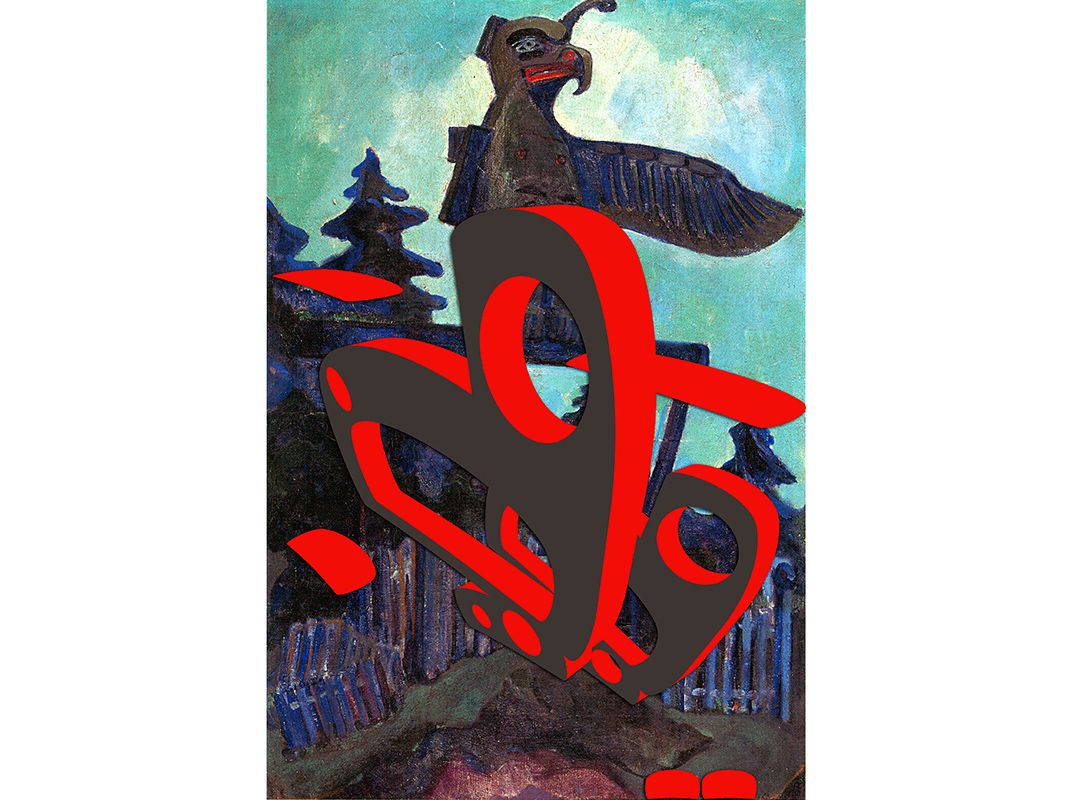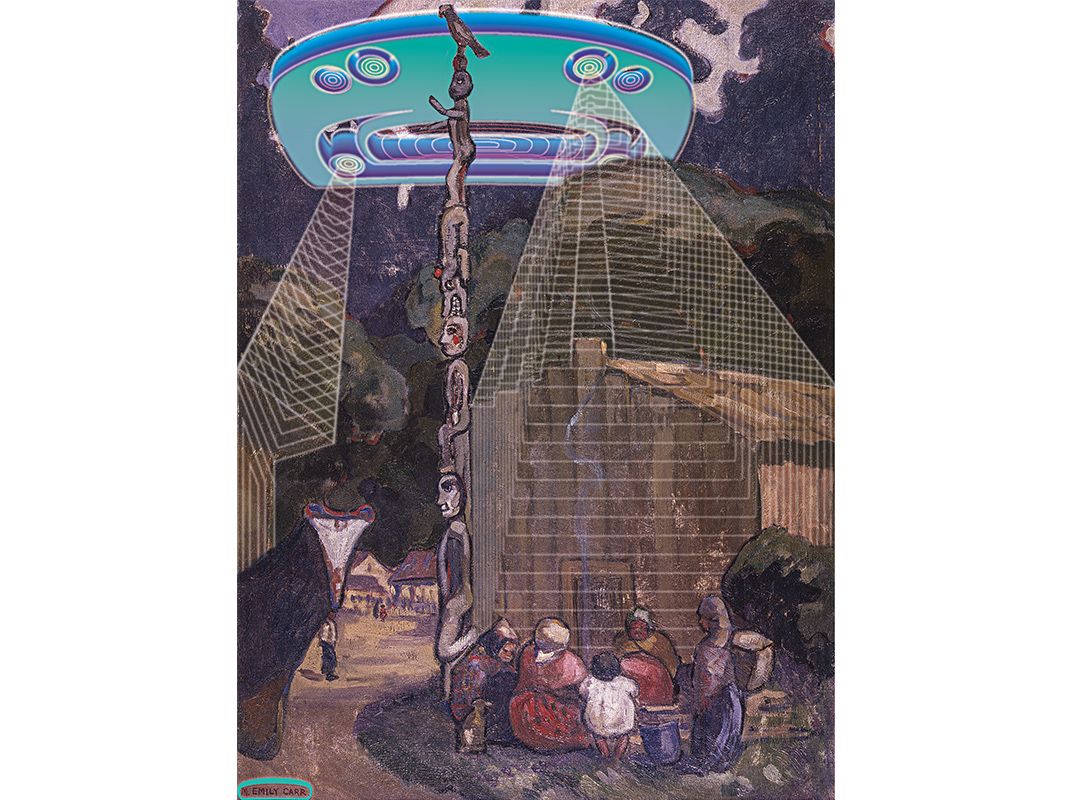Sonny Assu Uses Graffiti to Reassert Native Culture
The 41-year-old artist mashes decades-old depictions of indigenous peoples with modern-day style
While Sonny Assu doesn’t wield a can of spray paint, the 41-year-old member of the Kwakwaka’wakw peoples of Vancouver Island, British Columbia, has adopted a graffiti writer’s approach to his art: Find a canvas out in the world and make it say, “I’m here.” In his ongoing series “Interventions on the Imaginary,” opening at the Vancouver Art Gallery this month, he layers the sinuous shapes and ovoid motifs common in the art of his culture over paintings by 19th- and 20th-century artists whose depictions of indigenous North Americans could be seen as clichéd or romanticized. His 2014 piece What a Great Spot for a Walmart! uses a 1912 work by Emily Carr, a Canadian artist celebrated for her post-Impressionist totem poles and native villages. “I think a lot of people assume that she was documenting a dying race,” Assu says. “But indigenous peoples are still here. We were brought to the brink of extinction. And now we’re fighting back.”
/https://tf-cmsv2-smithsonianmag-media.s3.amazonaws.com/accounts/headshot/amy.png)


/https://tf-cmsv2-smithsonianmag-media.s3.amazonaws.com/accounts/headshot/amy.png)